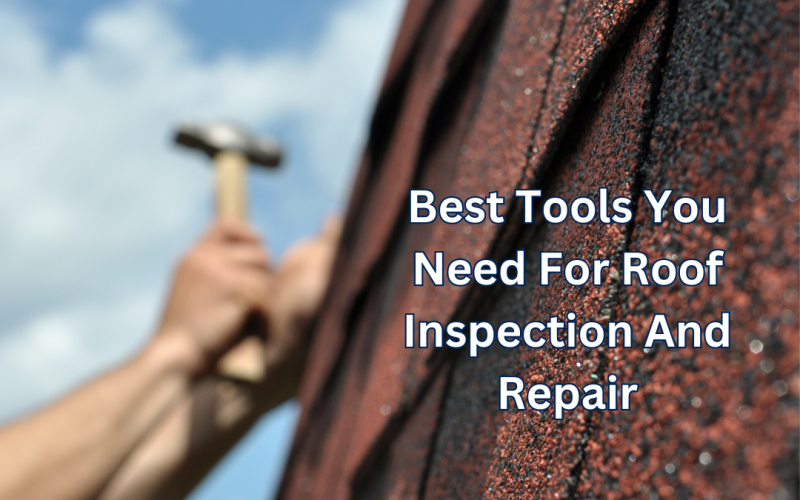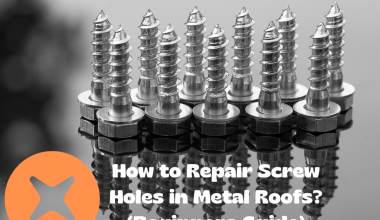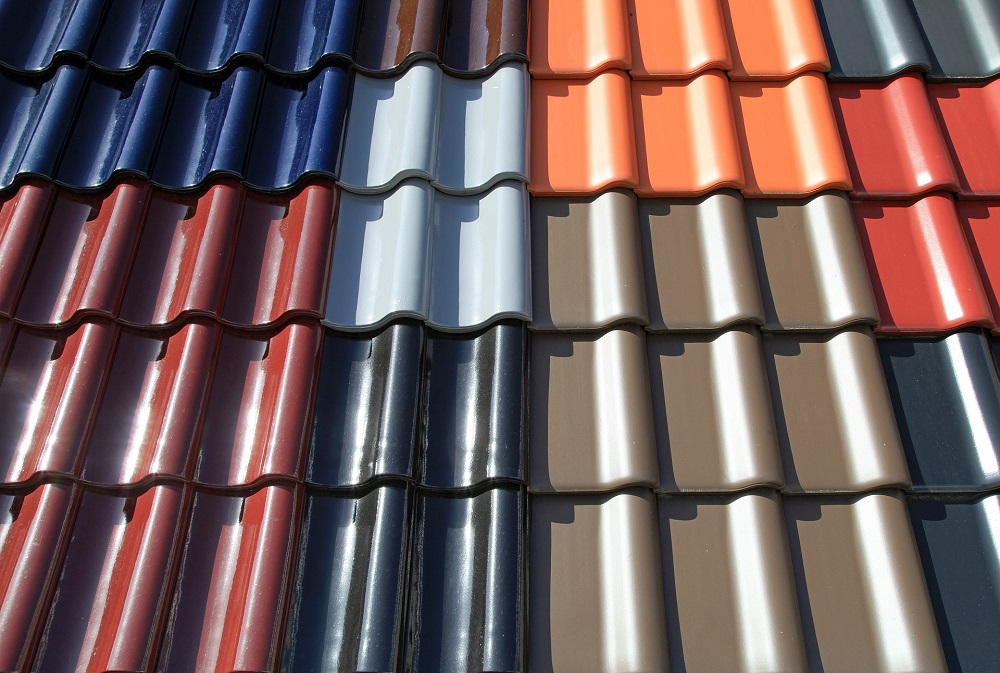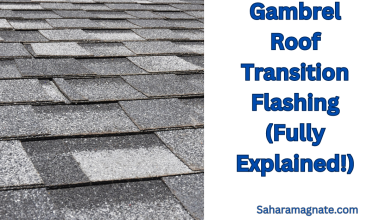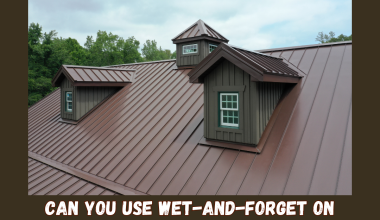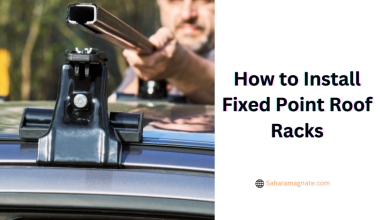You should be thankful if you’ve got a roof over your head! But all good things can deteriorate over time.
That’s why it is crucial to stay ahead of your roof’s needs and inspect it regularly. And when the time comes to repair the damage, having the right tools can make the job easier and more effective.
You may ask, what are the best tools you need for roof inspection and repair? No worries — we’ve got you covered!
This article will discuss the essential tools you should have in your toolbox for maintaining and repairing your roof.
We’ll provide in-depth information about each tool so that you know exactly what to buy and why. Ready? Let’s get started!
Best Tools You Need For Roof Inspection And Repair
Inspecting and repairing your roof can be daunting, but having the right tools makes it more accessible.
From safety equipment to specialized tools, here are the best tools you need for roof inspection and repair:
Essential Tools for Roof Repair
When it comes to roof repair, you’ll need a few essential tools. The list below outlines some must-haves that can help you get the job done:
Roof Rake
A roof rake is a long-handled tool with a blade on end, which can help you easily remove snow from your roof.
This is an essential step in maintaining the health of your roof and reducing the risk of any damage caused by snow accumulation.
Hammer & Nails
You’ll need a hammer and nails to attach any new shingles required when you inspect and repair your roof.
Make sure you pick the proper nails for the job—generally speaking, galvanized or stainless steel should do the trick.
Hand Shovels & Tarps
In addition to rakes, hand shovels can help clean up debris around your home or remove snow or ice buildup on your roof.
You’ll also want to have tarps handy, as they can cover up anything you want to keep protected while repairs are being made.
Safety tools
Before starting your roof inspection, you need essential safety tools to protect yourself from falls and other hazards. This includes a quality harness or fall-arrest system, hard hats, gloves, and non-skid work shoes.
it’s vital to remember to wear protective gear when working on a roof so that you stay safe throughout the inspection and repair process.
Specialized tools for inspecting and repairing your roof.
No matter what kind of roof you have, if it’s in need of some maintenance, you’ll likely need to take a close look and spot any issues.
To that end, there are several tools you can use to get a good look at your roof from the ground and sky.
Binoculars or Telescope
A pair of binoculars or even a telescope can give you a much better view of your roof from the ground than you’d ever get with the naked eye.
This is especially helpful when dealing with taller buildings and harder-to-reach roofs.
Drone
If your roof is best inspected from up high, then a drone is your go-to option for taking pictures of your entire roof for more thorough inspections.
Flying over your property allows you to spot any trouble spots without compromising safety, making it the perfect tool for inspecting large roofs from higher elevations.
All this data makes it easier to assess any damage sustained, no matter how far away it may be.
Ladder
For situations where getting up close and personal is necessary, having a ladder on hand will let you see all the details one might not be able to see from far away or on high.
For example, look for subtle signs of wear, cracks in shingles, or weak spots that could lead to further problems.
Other Tools for Roof Inspection and Repair
Roof jacks
Roof jacks can also help when making repairs on shingled roofs—they provide secure footing for inspection and nail down any loose shingles.
Flashlight or headlamp
You’ll also need a handheld flashlight or headlamp to light up any dark spots.
Toolbox
A toolbox can safely store tools like hammers, nails, screwdrivers, pliers, and utility knives.
Notebook
Finally, consider bringing a notebook and pen to take notes about potential issues you may need to fix later.
Doing so can help save time in future roof inspections by ensuring you don’t forget anything that needs to be taken care of.
The Best Tools for Different Types of Roofing Materials
Different materials require different tools, so you must identify the material you plan to use.
For example, asphalt shingles and ceramic tiles will require different approaches and a unique set of tools.
Metal roofs require specialized skills that may not be necessary for other roofing projects.
So here is a breakdown of the best tools you need for roof inspection and repair according to the roofing material:
Asphalt Shingles
This type of material is quite common and is easy to work with if you have the right tools and supplies.
To complete the repair, you will need an asphalt shingle cutter, pry bar, flat shovel, and chisel. Some other essential tools include a hammer, nails, and safety equipment such as gloves and eyewear protection.
Ceramic Tiles
When working with ceramic tiles, it’s vital to use non-corrosive tools such as rubber mallets or plastic hammers, as ceramic tiles are pretty brittle and can easily crack under too much force.
You will also need a tile saw or grinder to cut the tile properly without breaking it.
Additionally, an adhesive remover is needed to remove any old adhesive from the roof surface before replacing it with new ones.
Metal Roofs
Metal roofs are highly durable and require specialized knowledge for installation or repair jobs.
This roofing material requires specialized saws or grinders for cutting metal sheets into specific sizes; sealants are often used to secure them in place after cutting down their size accordingly.
Other tools that may be required include rivet guns, and hand-seamer pliers.
Common Reasons for Roof Damage
Knowing what can cause roof damage is important, and how to spot common problems is essential. The most common culprits include:
Wind Damage
Wind can cause severe damage to your roof, especially in storms. High winds can rip off shingles, loosen flashing and loosen any other materials that hold your roof together.
Hail Damage
Hailstones can be incredibly hard and have their own destructive power when hitting the roof. Hail tends to cause dimples on the material’s surface, weakening the roof’s protective layer.
Overhanging Trees & Animals
Overhanging trees or other obstructive objects can cause physical damage when limbs rub against your roof and when animals or pests reside in your attic or crawlspace areas.
Spotting these common issues is essential—so what tools do you need? You should have:
- Binoculars for spotting detail from a distance
- A ladder for climbing up to the roof level
- Flashlights with adjustable lenses so you can see all details when inside attics, crawlspaces, and other dark areas
- An eyeglass or magnifying glass so you don’t miss any details on shingles or caulk lines
- Work gloves and a handsaw in case you need to trim away overhanging trees or branches causing damage.
Conclusion
Roof inspection and repair work can be daunting, but it can be manageable if you have the right tools.
Ensure you have all the proper tools for the job, including proper protective gear and a sturdy ladder, which can provide a safe foundation for your projects and help you avoid serious injury.
Additionally, suppose you are unsure of any of the information in the article or need additional repair or inspection advice.
In that case, calling a professional and stepping away from the situation is always a good idea.
With the right equipment and a professional helping guide you, you can ensure that your roof inspection and repair are done correctly and safely.
